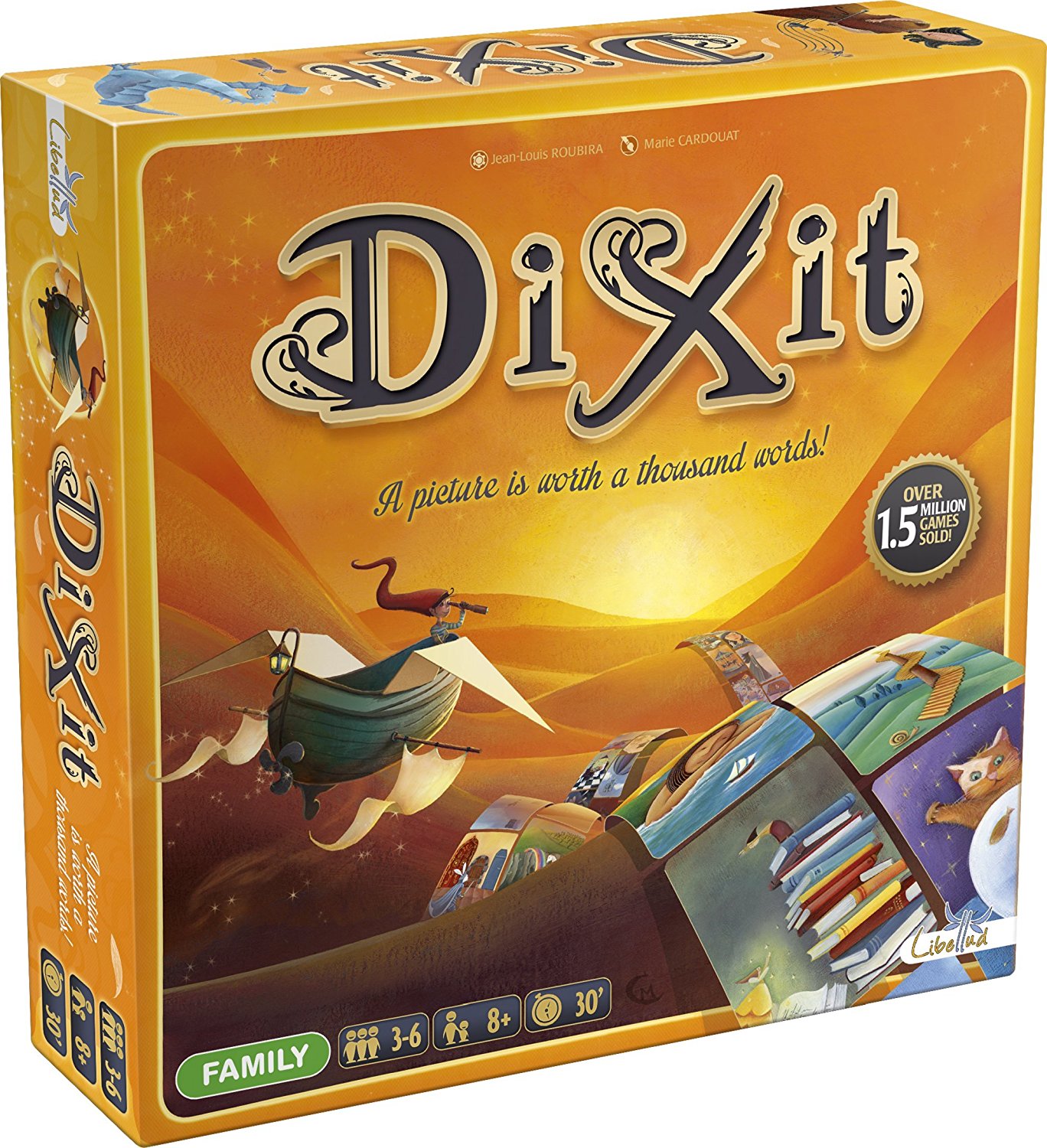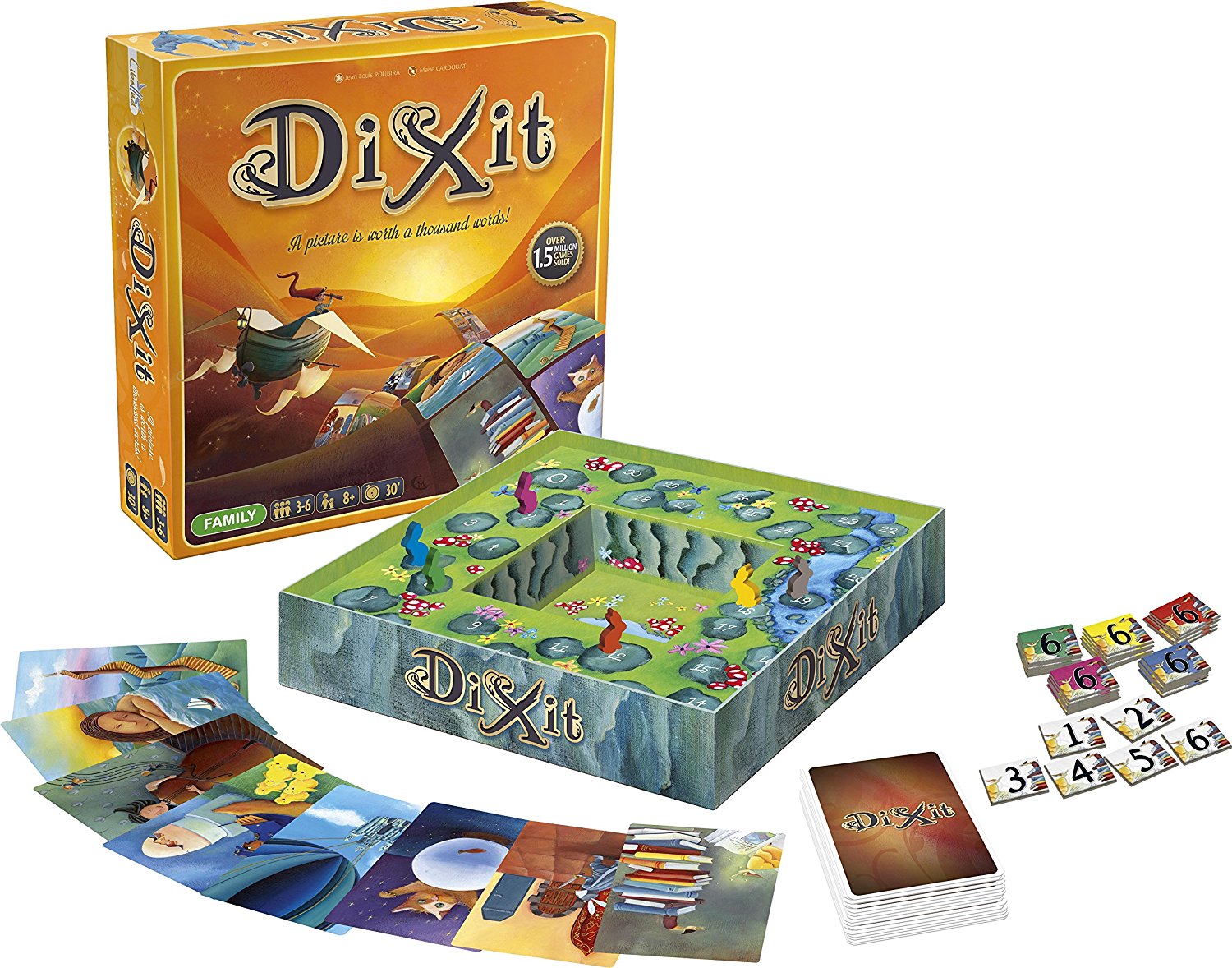We’ve been determined for months now to start playing regular Family Game Night Games. So when Asmodee got in touch and asked if we’d like to receive a selection of Family Game Night Games, I’ll admit I bit their hand off.
Finally, I was going to HAVE to get organised and sit down for some serious fun with the whole family; and it wouldn’t even be Christmas or on holiday!
(you can see last week’s review of Catan here)
Dixit was a game that was heavily recommended to me by a friend. When I first saw the box, I was not stunned or blown away. I was heavily sceptical at first… but let me just say now that Dixit might just be one of the best party games I have played in a long long time. It may not appear at first to be your classic party game experience, but once you get into the meat of the product with a group of close friends or family members, you will start to understand its party game appeal.

Family Game Night Games – Dixit
The base principle is simple. Dixit comes with a set of cards; but not your ordinary deck of playing cards. These cards feel like they were described by Lewis Carroll over the telephone to a talented impressionist artist who sketched the suggestions; there is no writing, there are no directions. Each features an unusual, fantasy-based beautiful abstract picture of something that doesn’t quite make sense. It might be a man on a hill blowing bubbles into space, a spiralling staircase surrounding a pole leading up toward the sky or an uncomfortable-looking giant eating houses. Each player at the start of the game draws six of these cards and the game begins.
The box acts as a traditional style board; each player chooses a rabbit of their own colour, and tiles of the matching colour each with a number up to however many people are playing. So if there were five people, the person with the orange rabbit would take the orange tiles one, two, three, four and five. He would then place his rabbit at the number 0. Every player follows suit.
On your turn, you look at the cards in your hand and pick one at random, without telling anybody what you have picked and put it face down on the table. You then proceed to tell the group at large a clue about what is on the card, being as precise or as vague as you would like to be. Next, every other player proceeds to look at their cards and place their own face down on the table, with whatever they think in their hand matches whatever you put down.

Every card that has been placed down gets shuffled up and then placed side by side facing up in the middle of the table. Next, each card is assigned a number with whoever’s go it is tokens from one to however many players there are. So for the sake of consistency, we have five randomly shuffled cards in the middle of the table numbered one to five, one of them being the original card that has been clued to the other four members. It is then the other four players turn to figure out which card was the original card. Once you have made your choice, the other four players place their tiles facing down with the number they think was the original, then on the count of three, everybody reveals their chosen number simultaneously.
Trust me – it’s much simpler to play than to explain!
Now here comes the tricksy part. As the clue giver, your goal is to make sure at least one person guesses the clue, but not everybody. If everybody guesses it right, everyone except you gets 2 points. And if nobody guesses it right, the same thing applies again. But if only a few people guess it and not everyone does, you score three points. So the goal is to make your clue obtuse and difficult but not impossible. Believe it or not, the 11yr old is a total master at this game!

It’s a game of playing mind tricks but also of being a little too obvious. It sounds a bit dull when you describe it – but it’s so much fun to play. It’s hilariously back and forth with friends and family, with everyone second guessing each other. It’s a thinking game – but you don’t have to think too hard.
It’s honestly our favourite kind of modern board game – instead of racing around a board collecting or answering, Dixit is one of the new breed of games which lets you use your brain. We human beans really do like to think – to bluff, cheat, out-manoeuvre and adapt. Also – WHY are we playing as rabbits? We’ll never know.
We love playing Dixit and highly recommend for a Family Game Night Games. Minimum of three players (age 8+), but we totally recommend you play with the full complement of six for the most noisy fun!
Dixit is available on Amazon for a smidge under £25 – it’s another perfect one to have in the cupboard for school holidays and wet afternoons.


Trackbacks/Pingbacks